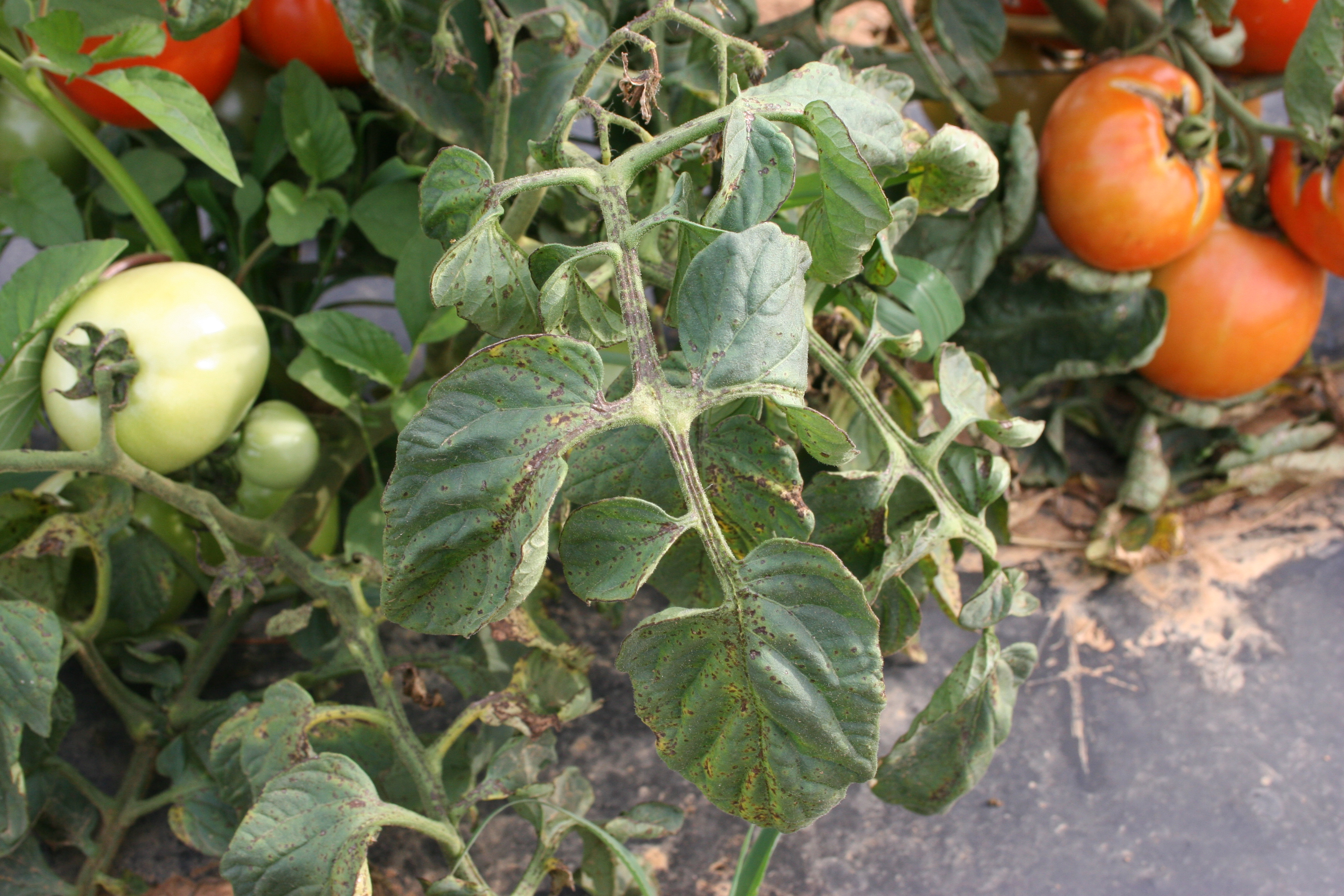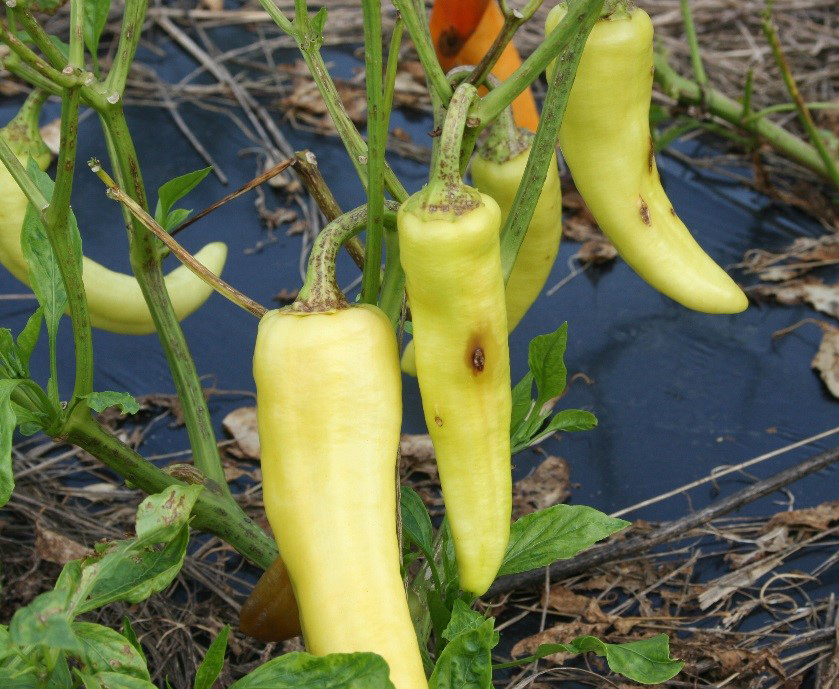Bacterial Spot
Return to Diseases
Bacterial spot (Xanthomonas spp.) occurs as spots on foliage, stems, and fruit of peppers and other solanaceous crops. Foliar lesions begin as small, circular, brown spots and may take on a wet appearance. These lesions may coalesce to form large blighted areas, which may also follow leaf veins. In severe cases, plants become defoliated, fruit drops, and flowering may be reduced or halted altogether. Lesions on green fruit develop as raised blisters about ¼ inch in size with a scabby appearance. This disease is favored by warm/hot temperatures. Contaminated seed and reused, unclean stakes are initial pathogen sources. Overhead irrigation and trellis injuries spread the bacteria among plants.
Note: This bacterial disease can become a significant greenhouse issues if bacteria are introduced via infested seed, transplants, or trellis materials. Thus, bacterial diseases are of particular concern for transplant producers or growers starting their own plants from seed. These pathogens can spread from initially infected plants through splashing water or by normal trellising activities. Transplants showing symptoms of bacterial diseases should never be set in the field or production greenhouse.

Bacterial spot on tomato foliage.
(Photo: Kenneth Seebold, University of Kentucky)
Bacterial spot on tomato fruit.
(Photo: Kenneth Seebold, University of Kentucky)

Bacterial spot on banana pepper fruit.
(Photo: Emily Pfeufer, University of Kentucky)
Bacterial spot on bell pepper leaf.
(Photo: Kenneth Seebold, University of Kentucky)
Management:
- Use disease-free transplants.
- Practice sanitation.
- Apply labeled bactericide sprays to manage secondary spread.
